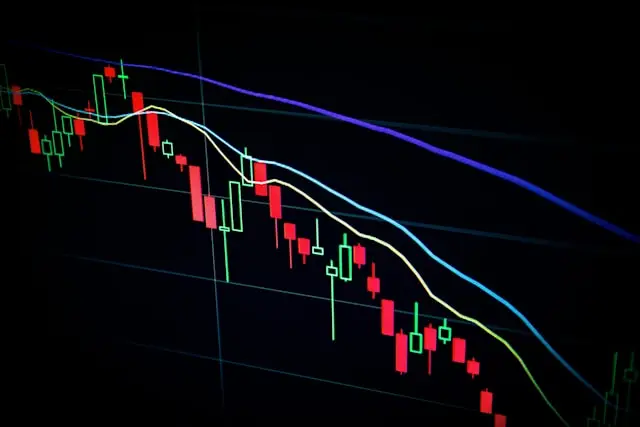Economic indicators such as GDP, unemployment rate, CPI, and PMI are crucial for understanding a country’s economic health. They provide insights into various aspects of the economy, from total economic output and job market status to the cost of living and the health of the manufacturing sector. Analyzing the changes in these indicators over time is essential for a deep understanding of their implications.
Common Economic Indicators
Gross Domestic Product (GDP): GDP represents the total value of all goods and services produced within a country. An increase in GDP indicates a growing economy with higher production and consumption, while a decrease suggests an economic slowdown.
Unemployment Rate: This indicator shows the percentage of the labor force that is unemployed and actively seeking employment. A decreasing unemployment rate typically signifies economic growth with more employment opportunities, while an increasing rate could indicate economic difficulties.
Consumer Price Index (CPI): The CPI measures the average change over time in the prices paid by urban consumers for a market basket of consumer goods and services. It is a significant indicator of inflation or deflation, influencing consumers’ purchasing power.
Purchasing Managers’ Index (PMI): PMI gauges the health of the manufacturing sector and is derived from monthly surveys of private sector companies. A PMI above 50 indicates expansion in the manufacturing sector, whereas below 50 signals contraction.
These indicators are integral to understanding the current state of the economy and anticipating future trends. They help analysts compile a comprehensive picture by revealing different dimensions of economic health, which is crucial for making informed investment decisions and strategic economic analyses. Each indicator offers unique insights that, when combined, provide a robust overview of economic conditions.
Importance of Economic Indicators
Economic indicators are vital tools, serving as the bedrock for financial decisions and policy formulation and affecting individuals, businesses, and governments worldwide.
For Investors: Economic indicators are akin to a crystal ball, providing insights that help investors gauge market conditions, forecast trends, and identify potential risks and opportunities. Without these indicators, navigating the finance world would be akin to traversing an unmarked intersection, where the path forward is unclear and fraught with potential hazards. They equip investors with the necessary data for making informed decisions about where to allocate resources and how to adjust investment strategies effectively.
For Policymakers: On a broader scale, governments and central banks rely on these metrics to guide economic policies. These indicators function like a thermostat, helping to modulate the economic climate—stimulating growth during slowdowns with expansionary policies or curbing overheating economies by tightening policies. This careful management ensures economic stability, with informed adjustments based on identified trends in economic indicators such as GDP growth rates, inflation, and employment statistics.
Historically, successful navigation through economic turbulence has relied heavily on the objective analysis provided by these indicators rather than on mere speculation or intuition. These tools are essential for policymakers to make informed decisions that steer economies towards stability and growth.
Broad Impact: Beyond individual investment decisions and government policy, economic indicators are crucial for assessing the overall health of the economy. They provide a comprehensive view that informs all economic stakeholders, making them indispensable in both strategic planning and daily economic analysis.
Now let’s delve deeper and find out examples of leading economic indicators.
Examples of Leading Economic Indicators
Leading economic indicators are essential for analysts to anticipate changes in the economy. These indicators, which change direction before the general economy, serve as predictive tools.
Stock Market as an Indicator: The stock market is a primary leading economic indicator, reflecting investor confidence and economic performance. A rising stock market generally suggests that businesses are doing well and that investors are optimistic about the future. Conversely, declining stock prices may indicate economic uncertainty and reduced investor confidence. For example, the stock market downturn during the 2008 financial crisis preceded the global recession, highlighting its predictive value.
Housing Starts as an Indicator: Housing starts, the initiation of new residential construction projects, also serve as a significant indicator. A healthy housing market, indicated by increased housing starts, suggests strong consumer demand and confidence in the economic outlook. This increase usually correlates with higher consumer spending and overall economic growth. Conversely, a decline in housing starts, such as what occurred after the 2008 crisis, can signal a cautious economic outlook and a slow recovery.
Analyzing Indicators: While indicators like the stock market and housing starts offer insights into future economic conditions, they are not infallible. Economic dynamics are influenced by a variety of complex factors, making it essential for analysts to use a comprehensive approach when using these indicators to predict economic trends.
In summary, leading economic indicators like the stock market and housing starts provide crucial insights into the economic future. However, analysts must consider these alongside other data points to form a well-rounded view of the economic landscape.
Key Finance and Consumer Indicators
When it comes to understanding the state of the economy, there are a few key statistics that analysts depend on; interest rates and the Consumer Confidence Index (CCI) are two such indicators that hold immense significance.
Interest Rates and Economic Influence: Interest rates directly impact economic activity by affecting borrowing costs. Lower rates decrease borrowing costs, encouraging spending and investment by consumers and businesses. Conversely, higher rates make borrowing more expensive, reducing spending and investment. Even small changes in interest rates can significantly affect the economy by altering consumer behavior and business investment decisions.
Consumer Confidence Index (CCI): The CCI measures overall consumer sentiment towards the economic environment, which directly influences spending and saving behaviors. A CCI above 100 suggests optimism, typically leading to increased spending. Below 100, the index indicates pessimism, resulting in decreased spending. Continuous monitoring of the CCI helps businesses and analysts predict consumer behavior changes and adjust their strategies accordingly.
Decoding the Impact of Indicators
Market Impact of Economic Indicators: Economic indicators significantly influence market volatility, affecting stock prices, currency exchange rates, and commodities. When indicators like unemployment rates come in higher than expected, it often leads to investor uncertainty and market sell-offs, which can drastically reduce stock prices. Conversely, positive surprises in economic data can boost investor confidence and push market prices up.
Predicting Market Trends: Economic indicators are akin to the tools meteorologists use to predict weather. Just as weather forecasts allow people to prepare for storms, economic indicators help investors anticipate market conditions. Effective analysis of these indicators enables investors to adjust their strategies in anticipation of economic shifts.
Investor Sentiment: Economic reports also shape investor sentiment directly. Positive data can increase market optimism, encourage more aggressive investment strategies, and raise asset valuations. Negative data, however, can dampen sentiment and lead to decreased asset prices and market confidence.
Strategic Decision Making: Investors who closely monitor indicators such as GDP growth and unemployment rates use these insights to inform their investment strategies. Strong economic signals may encourage more robust market participation, whereas weak indicators might prompt a more cautious approach to mitigate potential losses.
Navigating Financial Markets: For investors, understanding how to interpret and react to economic indicators is crucial for navigating the complexities of financial markets effectively. These insights are not only critical for anticipating market movements but also for making informed, strategic decisions that align with both current conditions and future projections.
Macro-Economic Indicators: A Deeper Look
Macro-economic indicators are like the heartbeat of an economy, offering critical insight into its overall health and performance. Let’s start with national income, a colossal metric in macroeconomic analysis.
National Income and Gross Domestic Product (GDP): National income, primarily represented by gross domestic product (GDP), is a crucial macroeconomic metric. GDP measures the total economic output—encompassing consumer spending, business investments, government expenditure, and net exports—of a country within a specific period. It acts as a comprehensive indicator of a nation’s economic activity and standard of living.
GDP is instrumental for gauging economic health. For example, rising GDP rates typically signal robust economic growth, often accompanied by job creation and increased corporate activity. Conversely, declining GDP figures can indicate economic downturns, potentially leading to increased unemployment and reduced business profitability.
Inflation: Inflation represents the rate at which the general level of prices for goods and services rises, impacting the purchasing power of a currency. Persistently high inflation can significantly diminish the real value of money, making everyday goods and services more expensive and potentially slowing economic growth. On the other hand, deflation—characterized by falling prices—might seem beneficial but can lead to economic decline as consumers and businesses delay purchases in anticipation of lower prices.
Understanding the dynamics of inflation is essential for maintaining economic stability and fostering conditions conducive to sustainable growth. This balance is crucial for policymakers, businesses, and consumers alike.
These macro-economic indicators provide vital insights that help analysts and policymakers gauge the health of the economy and make informed decisions aimed at fostering stable and sustainable economic growth.
As you delve into this fascinating world of economic indicators, consider how these metrics intertwine to shape economies and influence policy decisions. To explore the further implications of these indicators in finance and investment strategies, check out our free trial at Rosenberg Research.


